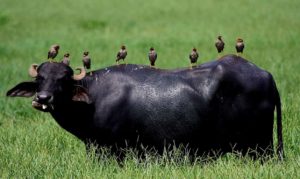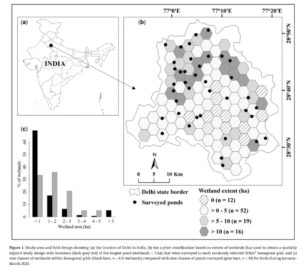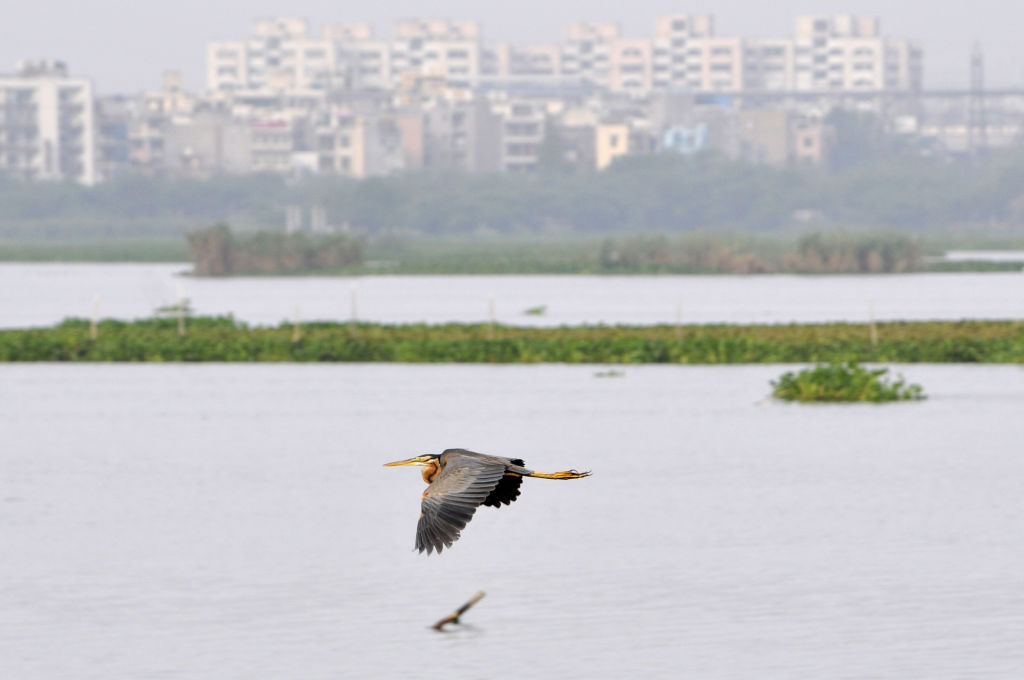Paradoxically, a populated and polluted Delhi supports a healthy diverse birdlife. A study reveals Delhi’s ponds are the most biodiverse of any urban ponds anywhere in the world
Delhi supports a diverse birdlife that only one other city in the world can match—that’s Nairobi. It’s a bit of a puzzle, how come one of the most polluted and populated cities of the world could sustain such varied birdlife. For instance, Okhla Bird Century—in and around the reservoir created by damming river Yamuna is very polluted— is home to wetland, grassland, and thorny scrub birds. How come, despite all odds, birdlife has flourished in the capital is a question that has puzzled many scientists and bird enthusiasts alike.
K.S. Gopi Sundar, Ph.D., Co-chair, IUCN Stork, Ibis and Spoonbill Specialist Group with Swati Kittur of the Nature Conservation Foundation and their team seems to have found an answer to this complex puzzle. They were approached by a student of Amity University, Prakhar Rawal, requesting help with his Master’s dissertation project. “We have lived in Delhi for five years and were familiar with the city’s amazing capability to retain birdlife. We are very impressed with Prakhar and honoured that he chose us,” says Gopi.
In this study—they collected enough information to publish two papers in international journals, including one in the prestigious Biological Conservation. Gopi found that urban ponds and adjoining wetlands less than 5 hectares—though most endangered habitats in the world—are “even more imperilled and ironically are even less understood relative to other ponds such as those found in agricultural areas,” he explains.
Yet, “Delhi’s ponds are the most biodiverse of any urban ponds anywhere in the world, as best as we can make out,” Gopi explains. Given this fact, the findings of the study are “surprising at many levels” as he puts it. Despite ponds being less than 0.5% of Delhi’s area, are home to nearly 37% of bird species that have been discovered in Delhi over the past 4 decades.

To carry out this study–the first of its kind–of urban ponds in a metropolis, Gopi’s team mapped the urban wetlands of Delhi using GoogleEarth. To their pleasant surprise, “Delhi still retained hundreds of wetlands – mostly very small. This retention was quite surprising but was the result of existing policy that prevents the conversion of any wetland in Delhi,” explains Gopi. They were trying to figure out how many bird species were still using Delhi’s ponds and why birds end up using these tiny remnant habitats.
The study revealed that the conditions at ponds were very diverse, determined by the varied history of the ponds. “Some were remnants of larger wetlands that seem to have been developed. Others were associated with temples or villages that have now been merged into the larger city,” explains Gopi.
In addition, some were extremely polluted and used as a garbage dump, while some others were healthy wetlands. Many have been “beautified” and with easy access have become recreational spaces where people frequent to escape the hustle-bustle of the city. It was a mega exercise to robustly document the state of ponds in the entire capital.
What was heartening was “as the diversity of habitats in and around the ponds increased, so did the number of species of birds,” says Gopi. Ponds with reeds, wetland grasses, shallow shorelines supported diverse wetland bird species like Pied Avocets, Ferruginous Pochards and Painted Storks.

This came as a surprise as these birds were thought to require undisturbed large wetlands. “In Delhi, these birds use ponds that have thousands of people living all around them!” says Gopi, his excitement palpable. While wetland birds were the most diverse, a large number of species that use trees were also seen at ponds. Also, ponds with any kind of island—could be natural or artificial like a fountain—had far more bird species compared to ponds without it. “Clearly, birds were looking for security in these tiny remnant habitats that were being used by hundreds of people,” says Gopi.
This pleasant outcome is not deliberate as the management of Delhi’s ponds from the point of utility for people, and not to make them better habitats for wildlife such as birds. But the birds have found ways to flourish under testing conditions, most of the varieties “we noted were feeding guilds such as insectivores and carnivores,” Gopi explains and adds, “Delhi’s ponds managing to retain birds belonging to these two guilds is a piece of excellent news, and very different from what is being seen in cities around the world.” Though he’s not certain why this is?
Gopi is hopeful that “small tweaks in current management can improve conditions further for birds inside the world’s largest urban area, and could even increase the diversity of birds.”
Gopi has carried many studies in the past that show how birds adapt to living with humans and flourish as if it was their natural habitat. This study is “a continuation of our exploration of unprotected and the lesser-known habitats,” explains Gopi. He hopes that this study will encourage the conservation of ponds in India’s congested, yet unexplored, urban spaces.





